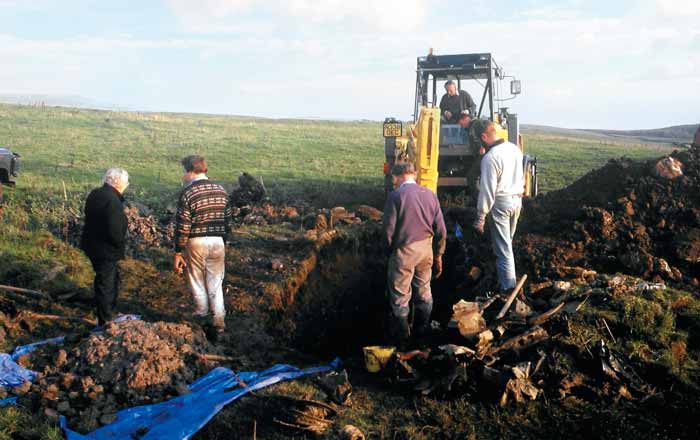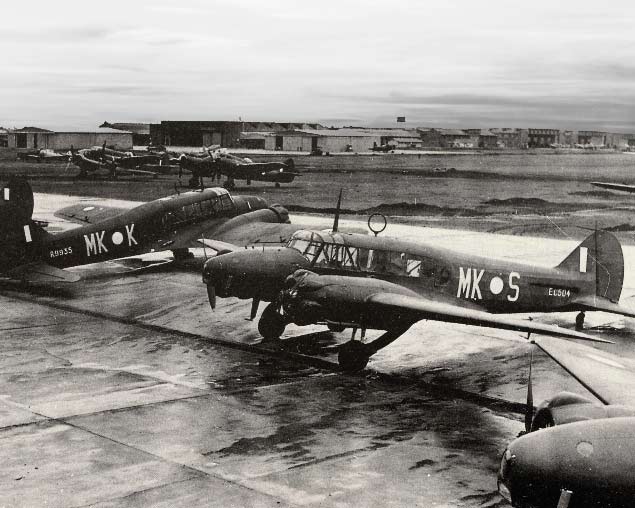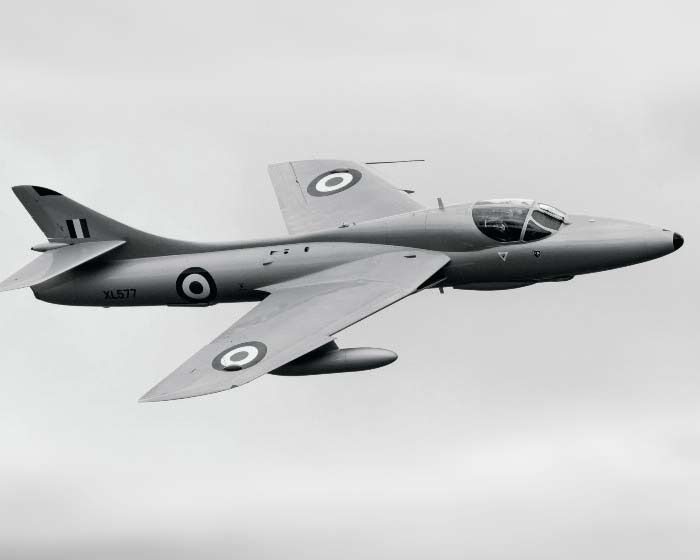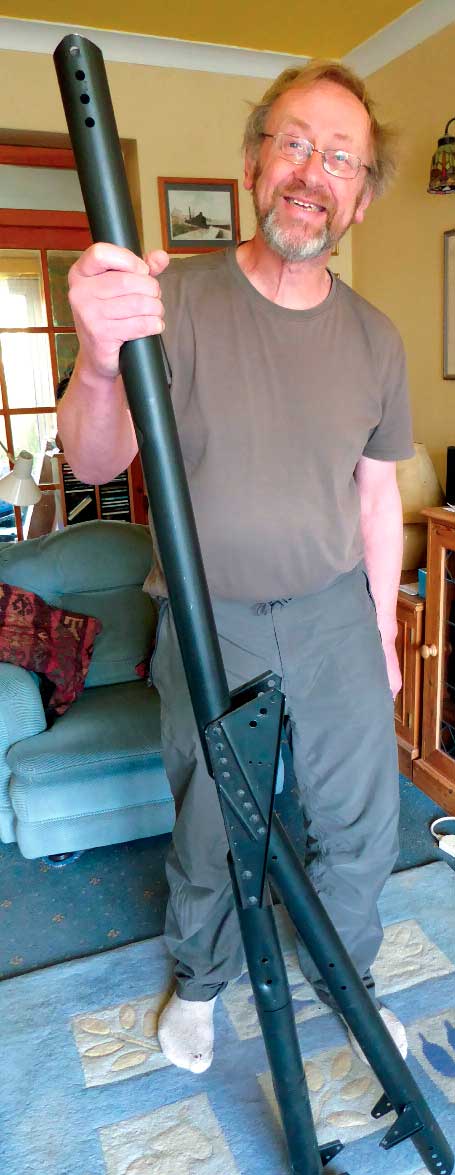
When David Stansfield was 16 he stumbled across an American Wartime Bomber
by Northern Life
When David Stansfield was 16 he struggled up the hillside over Black Hameldon, near Burnley, and stood gazing at what remained of the wreckage of a B-24 Liberator – an American wartime bomber which crashed in 1945.
It was an event which stirred his imagination and led him on a lifetime adventure in which aircraft played a prominent part.
His love for the flying machine was kindled by a bus conductor, Roy Berry, who was regularly on duty when David was travelling to and from school. He would talk about the aircraft he had seen and David made regular excursions to Manchester Airport – often on special summer bus trips – to spot planes and jot down their identification numbers and the different airlines they served.
It was on one of those trips when Roy had been the bus conductor, that the pair of them spotted an unusual Belgium airliner, a Sabena Dakota waiting to land and eventually ease its way on to the runway.
“We both stood entranced,” recalls David. “It was one of those magic moments.”
“My book of plane numbers has disappeared over the years but the love for aircraft hasn’t.” In fact 60 years ago he started, and still edits, the Aviation Archaeologist magazine which is produced four times a year. The first issue, in 1974, was produced on a duplicating machine but now the computer and a professional print company makes lighter work of production.
David also helped form the Aviation Archaeological Association which became the British Aviation Archaeological Council in 1978, a group of which he is currently the chairman.
The council has groups all over the country – and a number abroad. The twice yearly meetings give members the opportunity to work together to identify and salvage the remains of crashed aircraft – many with records of wartime service.
For some years David led the group’s efforts to run a museum in Bacup after the council offered them the use of a building which had lost its roof and needed a lot of renovation.
- Avro Anson
- Bell P400 Airacobra
- Hawker Hunter
He led members in restoring the building and setting up the small museum with parts from rescued aircraft and historic records of the planes whose relics were on show.
Unfortunately that building was eventually returned to the council in the 1980s.
The main items from the museum were distributed to large aircraft museums including a Vampire engine, and an Avro Anson cockpit which are in the Yorkshire Air Museum, at Elvington; a Balliol which is being restored at Boulton Paul Aircraft Ltd., Wolverhampton, and the cockpit from a Hawker Hunter on show at the South Yorkshire Aircraft Museum, at Doncaster.
“It was a shame and my desire is still to set up a small museum in the Burnley area, somewhere in which we can recall the aircraft which have crashed locally – sometimes with the loss of life. It is, after all, important local history.”

Working on the Settle site
The former teacher knows the value of using such artefacts in education in an era when local history is coming alive and many people are delving into their own family history.
The family side of history was never more evident than a request he had some time ago. He had regularly visited the site of a Halifax crash near Todmorden and one day took a phone call from the son of the aircraft’s navigator asking if he would show him and his father what remained of the wreckage.
David agreed and accompanied the couple to the site. “It is difficult to get to but the one-time navigator, now 70, managed to get there and stood for a long time in quiet contemplation. “It was very moving,” David recalls.
“Talking to him I learned that the aircraft was caught in heavy fog and dropped height in an effort to discover where it was. The navigator was sitting in the bomb bay underneath the aircraft with another crew member, eagerly scanning the aloud hoping for a break to enable them to see where they were. Then the pilot called for the navigator in the cockpit, and within a minute of him getting there, the plane smashed into the hillside. The 70-year-old admitted that had he not been asked to change position he would have been killed as the bomb bay took the full force of the crash. The two men in there were killed instantly while others on board survived.
“I could almost hear him thinking – ‘what if I hadn’t been called into the cockpit…’ It was terribly emotional.”
- Albermarle
- B-24 Liberator
- Jodel
- Sabenana Dakota
One of the other occasions he recalls vividly was in 1955 when he excavated the site of a Bell P400 Airacobra crash outside Settle in 1995. The aircraft had come down 53 years previously.
“I had previously discovered the farmer on whose land the aircraft had crashed but he had refused to allow us near the site. ‘No one is to touch it,” he said.
Years later I discovered he had retired and left the farm to his son so I returned, in hope.
“The son allowed us to work there providing we did not use heavy machinery. So with just spades and hand tools a couple of us went for a weekend. On the Saturday we found the site and had hardly managed to get anything on view because the earth was so compacted and hard. When the farmer asked how we were getting on we explained our dilemma. He borrowed our mobile phone and within the hour one of his friends appeared with a new digger and proceeded the clear the surrounding earth.
“The various parts of the aircraft were still visible and there were several large pieces which we were able to recover, thanks to having a Government licence to do so. It was probably the best day on a site I have had.”
He still has the engine – awaiting a place to be on display.
That aircraft was one of only 650 ordered by the RAF but which it did not take up. The planes were given to America and the American pilot on that particular machine found a problem and bailed out.
Unfortunately the decision to take to the parachute was made too late and he hit the ground and was killed. He was buried in Settle and the body returned to America after the war.
- David and part of the Albmarie frame
- David with the tray of items from the Liberator
What makes a man become a historian in such a subject? “I suppose in my youth I dreamed of having bits from a Spitfire, Hurricane or Lancaster – those memorable aircraft which make up our history. But now I enjoy it because each aircraft has its own absorbing history and story to tell.
“And those who flew in them, or their relatives, can have access so something about the miraculous escape, or, sad death, of a loved one.
“We did have an exhibition of some of the local artefacts in the Townley Hall and it was highly successful.
“I have learnt to fly and renovated my own aircraft, a Jodel – and flew it for many years. Sadly I haven’t flown for some years, but it was a constant reminder of how exhilarating it is and how easy it would be for something to go wrong.”
David, now 62, lifts a couple of lengths of metal and explains: “These were from the frame of an Albemarle. There were only 602 built and none remain. As far as I know the pieces I have – sufficient to rebuild a cockpit – are the only elements of that type of aircraft left.”
He takes a tray of small items and points to them individually. “This was the control for the heater on a flying suit, and this the panel which had to be unscrewed to deal with some of the aircraft’s electronics. This is a spark plug, and this part of the fuel line.”
And that tray contained items rescued from the Liberator that had crashed on Black Hameldon – the first crash site he visited – and is among many artefacts he has collected over the years for which he has so far failed to find a suitable place in which to display them since the Bacup Museum closed.
They have not only sparked his interest, but a thirst for the truth behind so many aircraft accidents and provide information for so many people desperate for the background to ancestors who had lived or died. It is cockpit history of a dramatic nature which David and those he has inspired over the years to follow his example are happy to unearth.













